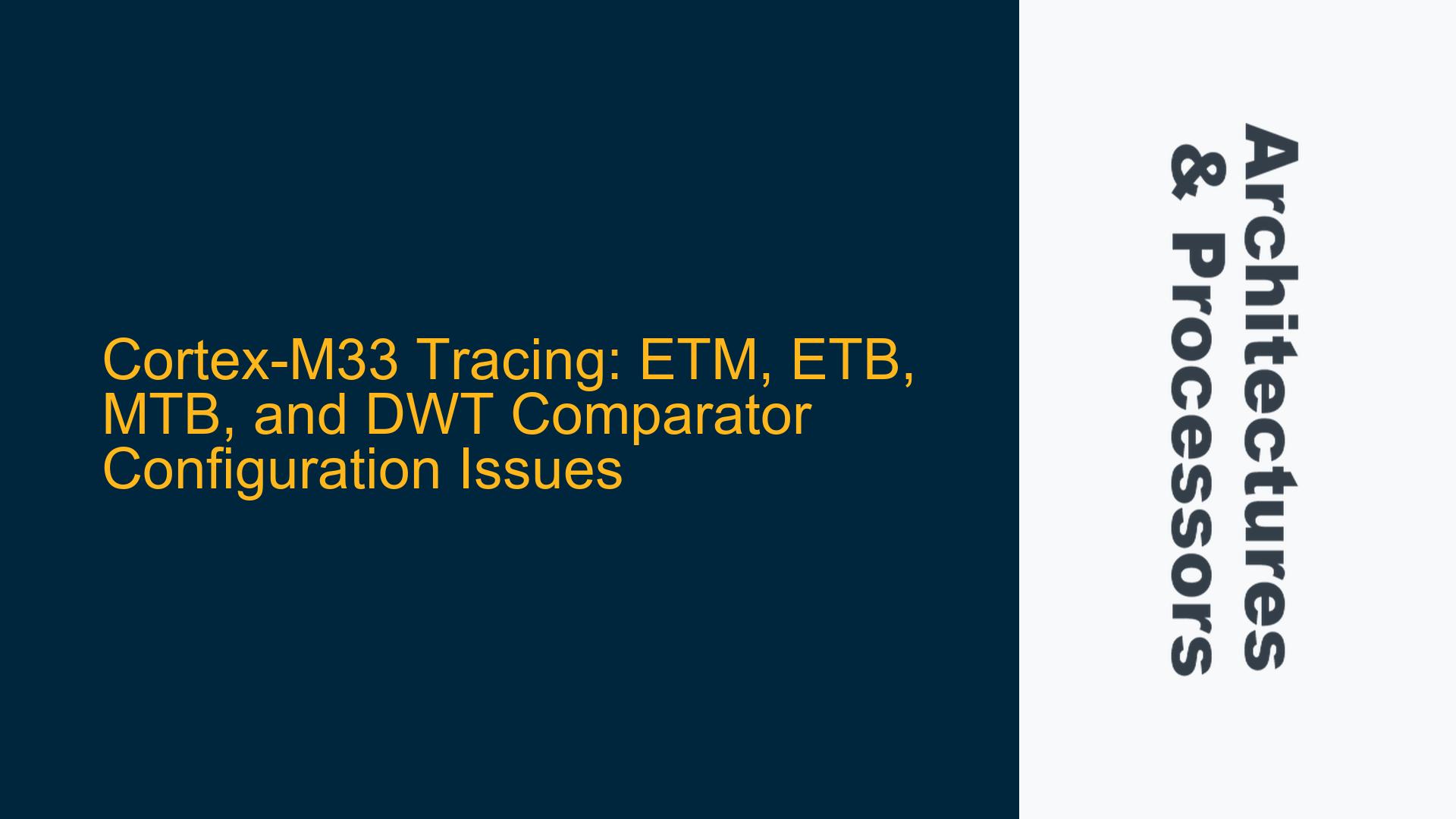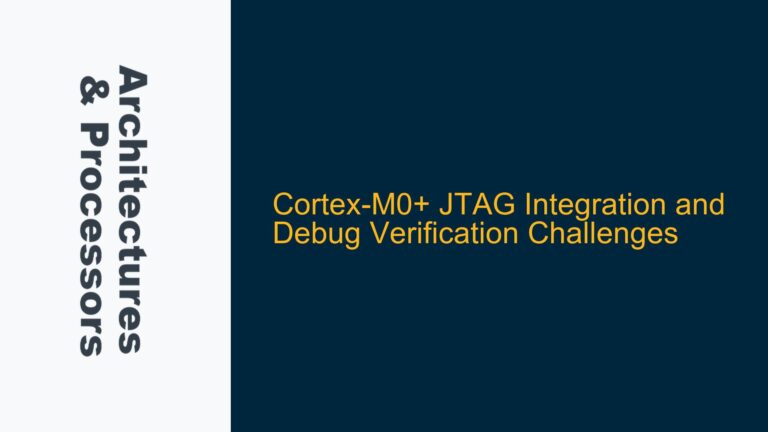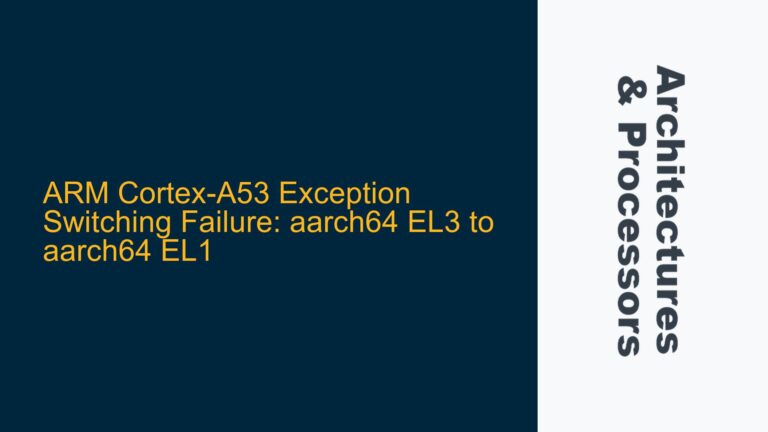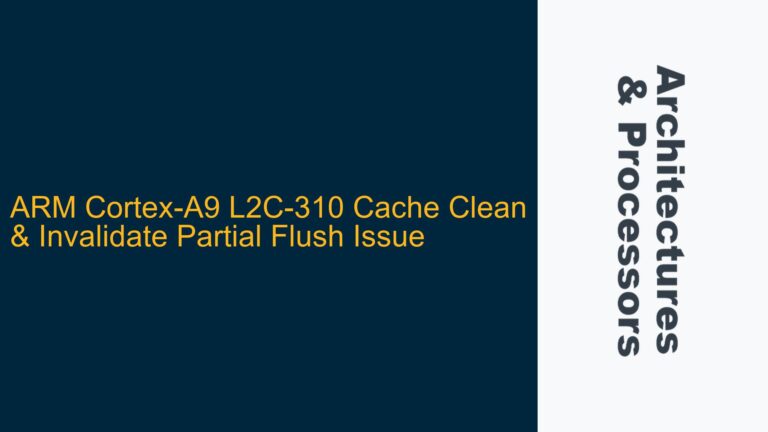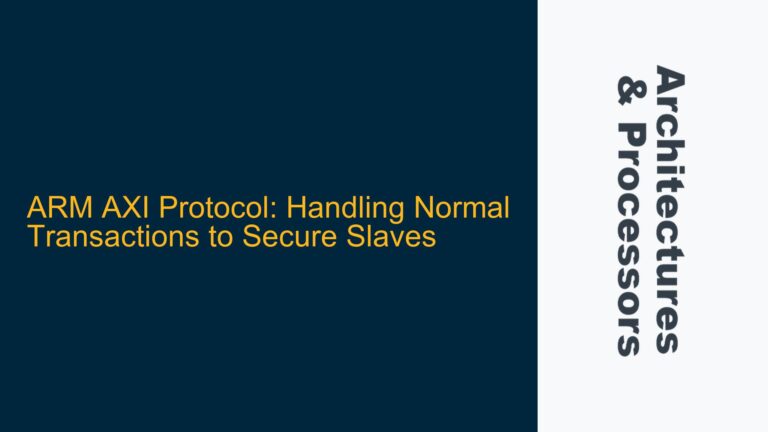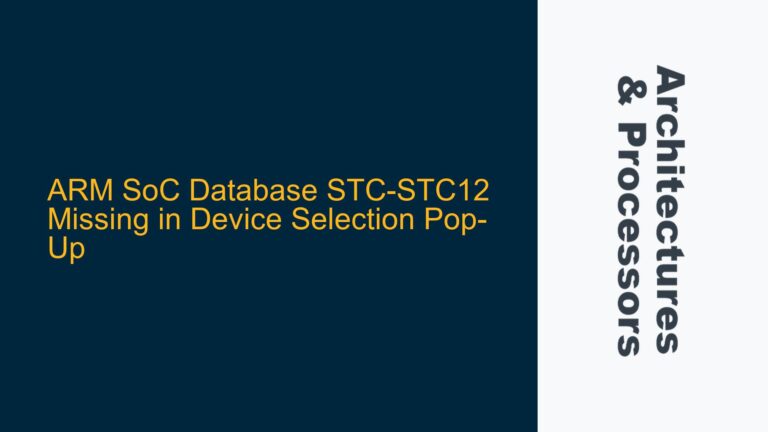Understanding Cortex-M33 Tracing: ETM, ETB, and MTB Interactions
The Cortex-M33 processor, part of ARM’s Cortex-M series, is designed for embedded systems requiring high performance and security. One of its advanced features is its tracing capabilities, which are critical for debugging and performance analysis. The Embedded Trace Macrocell (ETM), Embedded Trace Buffer (ETB), and Micro Trace Buffer (MTB) are key components in this architecture. However, their interactions and accessibility can be confusing, especially when integrating them into a running system.
The ETM is responsible for generating trace packets that capture the execution flow of the processor. These packets are then sent to tracing sinks, which can be either the ETB or the MTB. The ETB is an on-chip buffer that stores trace data, while the MTB interfaces with the SoC’s SRAM, allowing trace data to be stored in system memory. The primary distinction between the ETB and MTB lies in their storage mechanisms and accessibility. The ETB is typically a dedicated buffer within the trace cell, whereas the MTB leverages existing SRAM, making it more flexible but dependent on the SoC’s memory architecture.
A common question is whether the running core can access the ETB or MTB while the system is operational. The ETB is generally not memory-mapped, meaning it cannot be directly accessed by the core during normal operation. Instead, it is designed to be read by an external debug probe. This design ensures that the trace data does not interfere with the core’s execution and maintains the integrity of the system. On the other hand, the MTB, being part of the system SRAM, can theoretically be accessed by the core, but this is not a standard practice due to potential conflicts with the trace data collection process.
In systems where the ETB is not implemented, such as the one mentioned in the discussion, the MTB becomes the primary tracing sink. However, the absence of an ETB can limit the amount of trace data that can be captured, as the MTB relies on the available SRAM, which may be shared with other system functions. This limitation underscores the importance of understanding the specific tracing capabilities and configurations of the target hardware.
Debugging DWT Comparator Configuration and Debug Monitor Exceptions
The Data Watchpoint and Trace (DWT) unit in the Cortex-M33 is another powerful tool for debugging and performance monitoring. It includes comparators that can be configured to trigger events based on specific conditions, such as instruction or data address matches. However, configuring these comparators correctly can be challenging, especially when attempting to monitor specific memory regions or trigger Debug Monitor Exceptions.
The Cortex-M33 provides four comparators, each with distinct capabilities. Comparator 0 is versatile, supporting cycle counting, instruction address matching, data address matching, and data address matching with value comparison. Comparators 1, 2, and 3 offer increasingly specialized functions, including instruction address limits, data address limits, and linked data value comparisons. The flexibility of these comparators allows for precise monitoring of program execution and data access patterns.
However, enabling these comparators and configuring them to trigger Debug Monitor Exceptions requires careful attention to detail. The Debug Monitor Exception is a type of exception that can be triggered by the DWT unit when a comparator match occurs. To enable this, the Debug Exception and Monitor Control Register (DEMCR) must be configured correctly. Specifically, the MON_EN bit in the DEMCR must be set to enable the Debug Monitor Exception, and the appropriate bits in the DWT Control Register (DWT_CTRL) must be configured to enable the comparators and specify their functions.
A common issue arises when the comparators are not linked correctly or when the Debug Monitor Exception is not enabled. In the discussion, the user reported that no Debug Monitor Exception was triggered despite enabling it. This could be due to several factors, including incorrect comparator configuration, insufficient permissions, or conflicts with other debugging features. For example, if the comparators are not configured to monitor the correct memory region or if the Debug Monitor Exception is not enabled in the DEMCR, the system will not trigger the exception as expected.
Resolving DWT Comparator and Debug Monitor Exception Issues
To resolve issues with DWT comparators and Debug Monitor Exceptions, a systematic approach is required. First, ensure that the DEMCR is configured correctly by setting the MON_EN bit. This enables the Debug Monitor Exception and allows the DWT unit to trigger exceptions based on comparator matches. Next, configure the DWT comparators to monitor the desired memory regions or conditions. This involves setting the appropriate bits in the DWT Comparator Control Registers (DWT_COMPn) and ensuring that the comparators are linked correctly if necessary.
If the Debug Monitor Exception is still not triggered, verify that the memory region being monitored is accessible and that the comparators are configured to match the correct addresses or values. Additionally, check for any conflicts with other debugging features or system configurations that might prevent the exception from being triggered. For example, if the system is configured to prioritize other exceptions or if the Debug Monitor Exception is masked, the DWT unit may not trigger the exception as expected.
In cases where the ETB is not implemented, consider using the MTB as an alternative tracing sink. However, be aware of the limitations of the MTB, such as its reliance on system SRAM and potential conflicts with other memory operations. If the MTB is used, ensure that it is configured correctly and that the trace data is being captured and stored as expected.
Finally, if all else fails, consider using an external debug probe to access the trace data directly. While this may not provide real-time access to the trace data, it can be a valuable tool for post-mortem analysis and debugging. By following these steps and carefully configuring the DWT comparators and Debug Monitor Exception settings, you can effectively monitor and debug your Cortex-M33 system.
In conclusion, the Cortex-M33’s tracing and debugging capabilities are powerful but require careful configuration and understanding of the underlying hardware. By addressing the issues with ETM, ETB, MTB, and DWT comparators systematically, you can unlock the full potential of these features and ensure reliable and efficient system operation.
